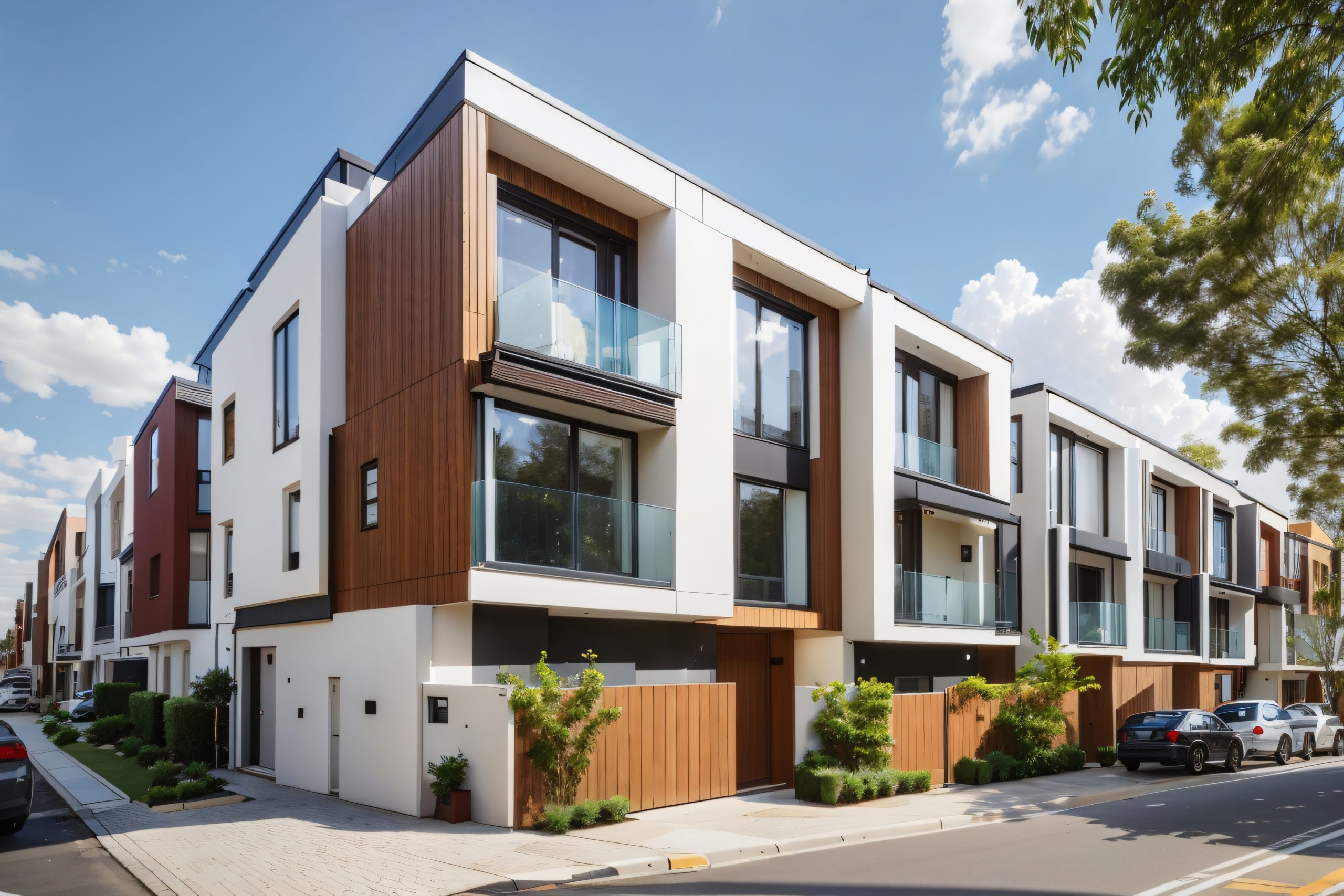A strata scheme should consider more than just building insurance when reviewing its insurance needs.
Building
Building insurance for strata schemes is mandatory because the legislation in each state and territory makes it a requirement. The definition of building is broad and relates to all permanent and fixed structures within the scheme, including within individual lots.
The definition of building includes aboveground and underground services such as:
- internal water and waste pipes
- street lighting
- electrical
- sewerage and stormwater pipes
- motors (stormwater, sewerage, water, garage
- landscaping and outdoor common area structures (BBQ, pool, tennis court, gym, other recreational facilities)
Building insurance is for more than just common areas. Fixed or permanent structures inside units are also covered, including:
- bathroom fixtures and fittings (baths, basins, toilets, shower screens, sinks, tapware, plumbing)
- kitchen cabinets and built-in appliances (stoves and ovens)
- built-in cabinets and wardrobes
- fixed floor coverings (tiles, vinyl, hardwood flooring)
Cover for the following items depends on state legislation and the individual insurers, so always check the Product Disclosure Statement (PDS) or policy wording.
- Paint, wallpaper and light fittings in a unit (but not light shades).
- Floating timber flooring.
- Air conditioning that services individual units (no cover in Queensland).
Occupants’ personal contents aren’t covered by building insurance. This includes motor vehicles, furniture, personal effects and loose floor coverings, including carpets, within a lot. Personal contents stored on common property are also not covered.
The strata insurer must be notified about any significant improvements or alterations to the building to ensure any upgrades are protected under the insurance policy. The strata scheme must also ensure the building sum insured is sufficient before renewing the insurance each year.
Common area contents
Common area contents are owned and/or are the responsibility of the strata scheme and can be found in any common area of the property. Examples of common area contents include:
- carpets, temporary wall, floor and ceiling coverings
- pot plants, mirrors, artwork, public seating
- appliances in common laundries, cleaning equipment
- outdoor barbeque equipment, gardening equipment, outdoor furniture, pool equipment and gym equipment
- any equipment, artwork or appliances hired by the strata scheme under an agreement that makes the scheme responsible for that equipment.
Floating timber floors may not be a standard cover. Check if your building insurance includes this and if the scheme has floating timber floors in a common area or if they’re common throughout the building (including within units).
Personal contents
Personal contents are owned by occupiers of a unit. The strata scheme doesn’t own or have any responsibility for these items, and it’s the responsibility of the occupier to insure their personal contents.
Personal contents may include (but not limited to):
- carpets and loose floor coverings
- light fittings
- temporary window coverings (blinds, curtains)
- household appliances (including fridges and dishwashers)
- all furniture (including anything stored on common property)
- personal belongings of any description.
The following may need to be included in an occupier’s contents insurance if the strata insurer doesn’t provide cover.
- Floating timber flooring
- Air conditioning units
- Internal wall coverings (paint, wallpaper)
An occupier can be an owner, a long or short-term tenant or an overnight guest.
Public or General Liability
Public or General Liability is mandatory insurance for strata schemes under the strata legislation in all states and territories.
The insurance provides the strata scheme with a defence, including legal costs for claims made against it for third-party property damage and injuries or death. If the scheme has liability exposure, the insurance may cover compensation to the third party and any awarded legal costs.
The insurance covers only the named insured, ie the strata scheme. There’s no cover for individual lot owners.
It’s important to understand that anyone can be named as a Defendant in a Public or General Liability claim. Where an incident occurred has no bearing on if cover is extended or not, only whether the strata scheme is named as a Defendant.
Owners should ensure their personal or landlord’s contents insurance includes Public or General Liability in case they are named as Defendants in a claim.
Office Bearers Liability (OBL)
An Office Bearer is any person, past or present, appointed to act in that capacity. This includes the Chairperson, Secretary, Treasurer and Committee Members. The Office Bearers and Committee Members represent the owners and administer the day-to-day running of the strata scheme and have a duty of care and diligence when making decisions on behalf of owners.
OBL insurance isn’t mandatory under state and territory legislation. However, strata schemes should have insurance to protect the people in these roles. Office Bearers can face potential legal action if a claim is made against them whilst acting in this capacity. An OBL claim is triggered when an allegation is made that an Office Bearer has committed a Wrongful Act, as defined by the policy.
Most specialist strata insurers offer OBL as an optional cover, providing essential peace of mind for Office Bearers carrying out these voluntary duties.
Legal Defence Expenses (LDE)
An LDE claim can be considered if the proceedings don’t involve third-party property damage, injury or a claim against an Office Bearer or a Committee Member. It’s a policy condition that if the claim is for these matters, cover can’t be extended, even if the strata scheme doesn’t have these insurances.
LDE covers defence costs only, and there’s no coverage for compensation, awarded costs, fines or penalties of any description. The cover usually has a capped annual policy limit that resets each year at renewal, but only for new matters. The capped policy limit is the maximum claimable for any one matter. However, multiple matters can be considered in the one renewal period, up to the limit.
LDE cover is usually considered for matters where legal action relates to the day-to-day running of the strata scheme, such as caretaking disputes, Tribunal applications and contractor disputes.
The policy has conditions that must be met before an insurer will consider granting cover and the scheme is required to engage its own lawyer. The scheme’s lawyer must advise the estimated cost to defend the matter, the proposed defence strategy and a statement providing the prospects of the scheme successfully defending the matter. If the insurer deems the matter is not defensible, it will not grant indemnity.
Machinery Breakdown and Equipment Breakdown Insurance
In the Building and Common Contents section of the policy, cover is provided for machinery damaged by a peril covered by that section of the policy.
This is an additional cover that can be purchased by a strata scheme when they have machinery that may sustain damage outside of the normal perils or where that cover is insufficient with respect to age or machinery size limitations.
This generally applies to multi-level or high-rise buildings which may have numerous lifts, generators, sump pumps, car stackers, air conditioners, and other machinery necessary in a larger building.
The cover doesn’t replace a Comprehensive Maintenance Agreement and doesn’t cover parts or machinery that have worn out or are subject to other policy exclusions. The event may be the failure of an internal machinery part that fractures, causing internal damage. The failed part itself isn’t covered, but the damage to the machinery is.
The machinery doesn’t have to be listed or identified but sufficient cover must be considered to cover all machinery up to the sum insured.






